May is National Electrical Safety Month
SUMMER IS ALMOST HERE!
Jumping into the water after a long day is one of the best ways to decompress from the daily grind. Floating on a raft or simply dipping your toes in the water is a great way to relieve stress.
However, the joy of boating and swimming can change quickly when an electric shock drowning occurs.
The National Fire Protection Association, along with many other organizations, has developed standards based on research of past accidents and proven methods to assure you and your family’s electrical safety.
Here are some basic tips to help protect you and your family, provided by the University of Alabama, Safe State, the leading safety institution in Alabama.
- Inspections and Testing – Should be made Annually, Monthly, and after a storm or accident
- Testing should consist of Ground Fault, Ground Loop Impedance, Step Potential, and Differential Potential at a minimum
- Use only Qualified Persons to inspect, test, and install boat docks and associated electrical equipment.
- Most accidents occur because of installation errors or neglect. Mild shocks should be addressed as soon as possible.
Here’s a five-minute audio from Integrity Institute of Technology – Deep Dive -David R. Carpenter, PhD, titled “How to Protect Your Swimming Pool from Electrical Hazards for Homeowners?”
Call Before You Dig: 6 Tips for Avoiding Buried Utilities
As temperatures rise and excavation projects increase, prioritizing safety is crucial. April is National Safe Digging Month, a time to raise awareness about excavation hazards and the risks of striking underground utilities and pipelines – also known as “dig-ins.” In the U.S., more than 550 “dig-ins” occur every day* – each posing serious dangers to workers and communities.
Did you know that every digging project – no matter the size – requires contacting 811 before work begins? Whether online or by phone, your state’s 811 service will guide you through a simple process. After answering questions about the details and location of your project, you’ll receive a free ticket number and information on how much time your local utilities have to mark their underground lines. Before you dig, it’s important to confirm that all utilities have responded and marked their lines.
By following a few key safety steps—including contacting 811 before every dig—you can help ensure smooth and incident-free excavations. Whether you’re working on a large construction project or a routine dig, here are six must-follow excavation safety tips:
- Always Have a Valid 811 Ticket. Contact 811 a few business days before every dig – no exceptions. Before starting work, double-check that your ticket is valid and includes the correct location, start and end dates, contractor details, and project type.
- Confirm Utility Responses Before Digging. Before breaking ground, review your 811 ticket to ensure all utility companies have responded by marking your site or clearing your ticket. Physically inspect the area for any above-ground signs of unmarked underground utilities before proceeding, such as pedestals, manhole covers or meter boxes.
- Protect Utility Markings. Once utilities are marked, it’s your responsibility to preserve flags, stakes, and paint markings. If weather or site conditions make the markings unclear, request a remark from 811 before continuing work.
- Pothole or Test Dig to Expose Utilities. Utility markings are approximate, and congested underground environments can lead to mismarks. To safely verify utility locations, use hand tools or soft-dig methods (such as vacuum excavation) within the “tolerance zone,” the designated safety margin surrounding marked utilities that demands careful, non-mechanical excavation practices. This is the only way to accurately confirm underground utilities.
- Use Caution with Heavy Equipment. Even after verifying utility locations, exercise extreme caution when operating heavy machinery near buried lines. Backhoes cause the most damage to underground utilities, so operators should designate an “observer” to help prevent dig-ins.
- OSHA’s 3 S’s: Slope it. Shore it. Shield It. Soil is heavy, and trench collapses can be fatal. Always follow trench safety best practices**: slope trench walls at a safe angle or bench them in steps; shore trench walls with protective supports; and shield workers using trench boxes. These precautions protect workers inside and around excavations.
Remember, 811 helps protect you and your community by preventing utility strikes that can disrupt service, lead to costly repairs, or cause serious injuries and fatalities. Before any digging project, always contact your state’s 811 center, wait for utilities to respond, and confirm that all utilities have marked their lines before you put a shovel in the ground.
The information above is also available at Common Ground Alliance, a member of OSHA’s Partners for Safe Trenching and Excavation Operations Alliance. This alliance raises awareness and promotes best practices to reduce risks associated with trenching, excavation, and related construction hazards.
Visit OSHA’s Trenching and Excavation safety and health topics page and read Common Ground Alliance Best Practices for more information.
*Common Ground Alliance’s 2023 DIRT Report.
**Working Safely in Trenches, OSHA QuickCard™ (Publication 3243), (2018). (Also available in Español.)
UA SafeState Announces New Safety and Health Certificate Recipients
Several dedicated safety and health professionals received Construction or General Industry Safety and Health Management Program Certificates this past quarter from UA SafeState’s OSHA Training Institute Education Center (OTI-EC).
In order to earn their certificates, recipients were required to complete nearly 100 hours of classroom training in at least six courses and demonstrate their expertise by examination. We commend them for this accomplishment and applaud their efforts to ensure the safety and well-being of co-workers on the job.
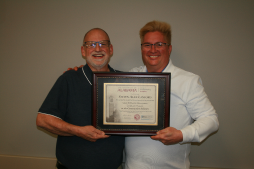
Steven Lanford
Construction Industry Certificate
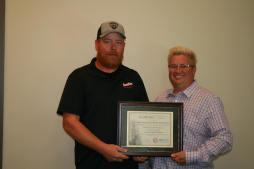
William Thompson
General Industry Certificate
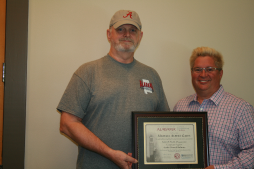
Michael Gates
General Industry Certificate

Nakaial A. Jones
Construction Industry Certificate
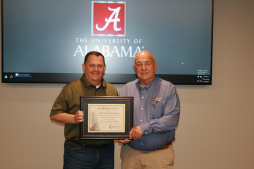
Jeffrey B. McCurley
Construction Industry Certificate
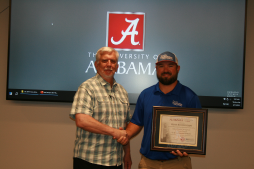
Kevin Ketchum
Construction Industry Certificate
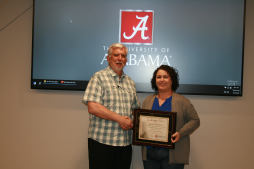
Danita Owens
Construction Industry Certificate
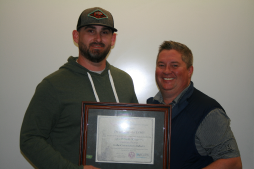
Jacob Lewis
Construction Certificate
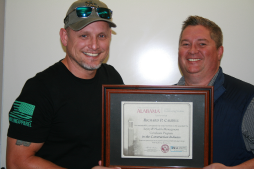
Richard Caudill
Construction Certificate
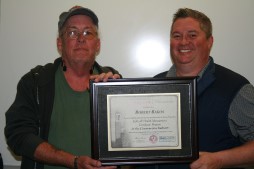
Robert Bakos
Construction Certificate
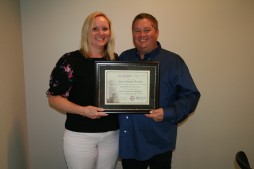
Angie Bowen
Construction Industry Certificate
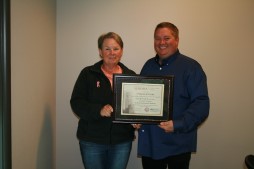
Charla Clarke
Construction Industry Certificate
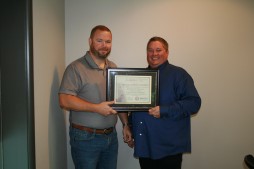
Michael Cantrell
Construction Industry Certificate
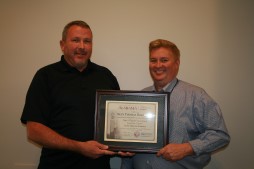
Sean Boulanger
General Industry Certificate
If you would like more information on the Construction Safety and Health Management Certificate program or General Industry Safety and Health Management Certificate program, please go to OTI-EC Certificate Programs or call (205) 348-4585.
News from UA OSHA Training Institute Education Center
What a great year we had at the University of Alabama OSHA Training Institute Education Center! Our trainers conducted OSHA 10 and 30 hour classes for over 10,000 students having an impact on safety in the fields of Construction, General Industry and Maritime in Alabama, Arkansas, Florida, Georgia, Louisiana, Mississippi, South Carolina, Tennessee, Texas, and other states throughout the country. So proud of our trainers and their passion to keep their employees safe on the job! Join us and be a part of our ongoing initiative to keep safety on the forefront in our companies and communities. Let’s get everyone home in the same condition they left before heading to work.
Visit our website to see our current training schedule and information on the classes conducted through the UA OSHA Training Institute Education Center.
OSHA New Regional Structure
Beginning October 1, 2024, OSHA has transitioned to a new regional structure. This includes the creation of a new OSHA regional office in Birmingham, AL overseeing agency operations in Alabama, Arkansas, Kentucky, Louisiana, Mississippi, Tennessee, and the Florida Panhandle. The states of Georgia, North Carolina, South Carolina, and Florida (except the panhandle) will now be the Atlanta Region. OSHA will rename its regions to associate them by geography rather than its current practice of assigning numbers to regions. To see the new regions and their names go to https://www.osha.gov/contactus/bystate
Environmental Classes Calendar for 2025
The Calendar for our Environmental Classes for 2025 has been released. You can view the calendar here: https://alabamasafestate.ua.edu/schedules/environmental_courses/
If you would like for us to email you a pdf showing these course offerings with dates and fees please email Gregg Cubel at glcubel@ua.edu
If you have any questions about which class you may want to take you can email Gregg Cubel at glcubel@ua.edu or you can call us toll-free at (877) 50-TRAIN.